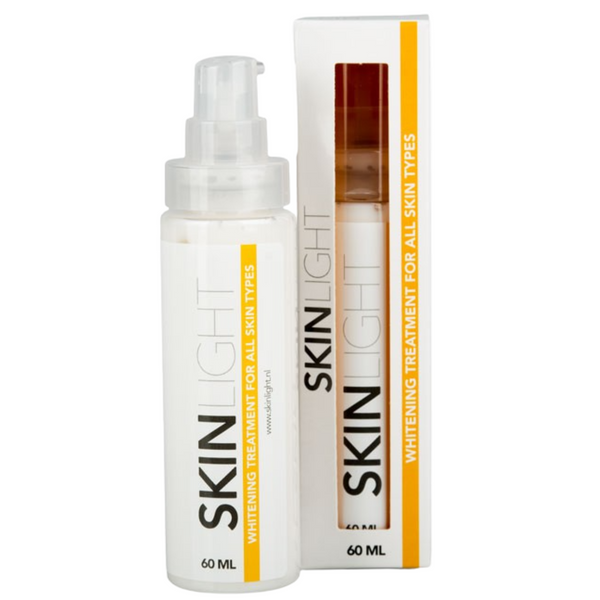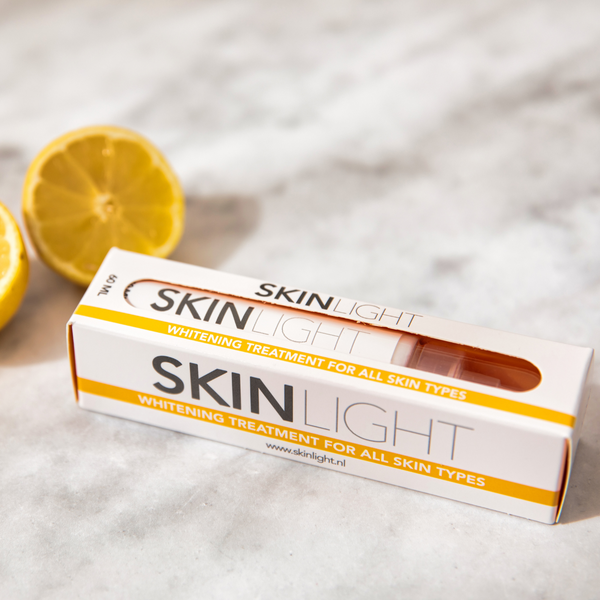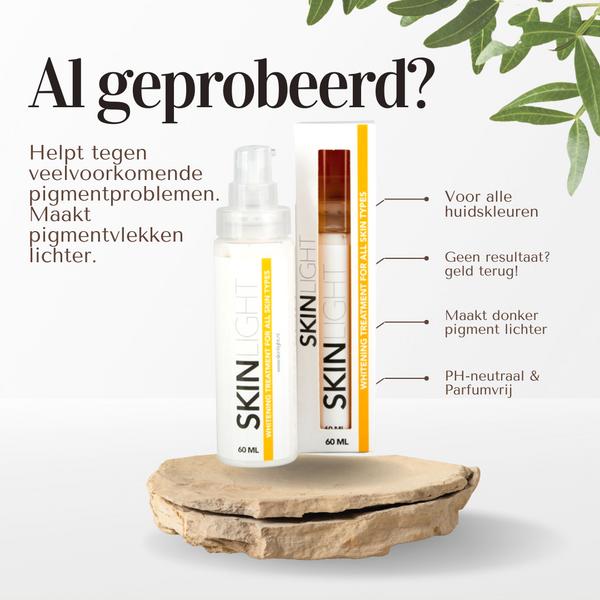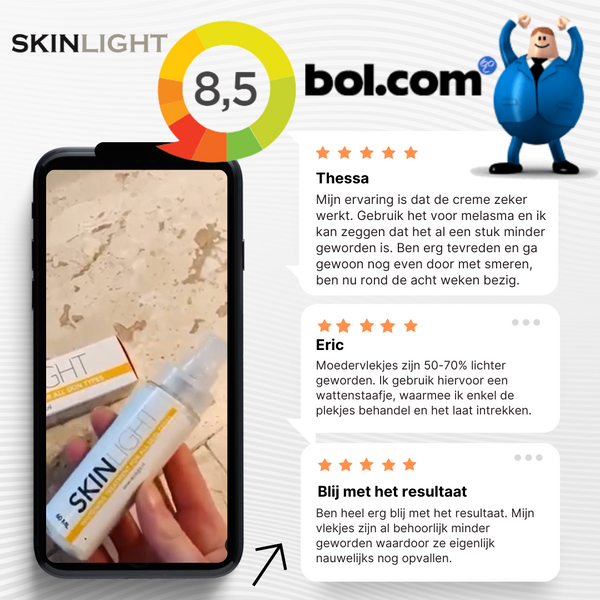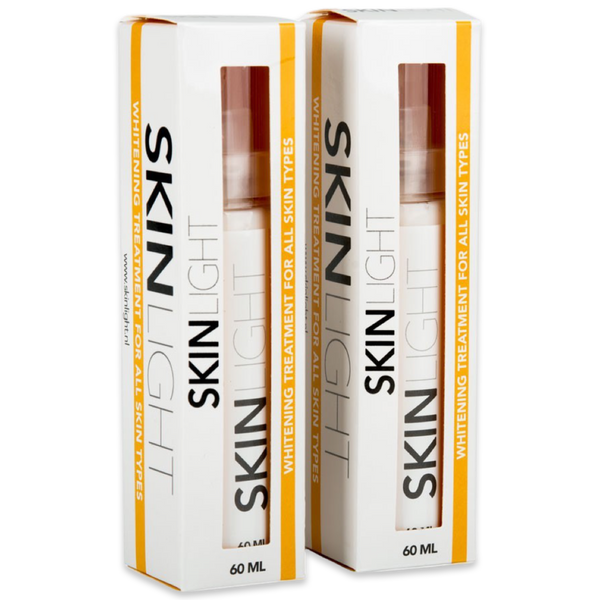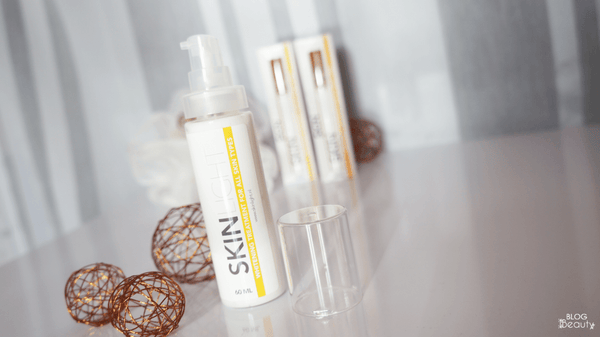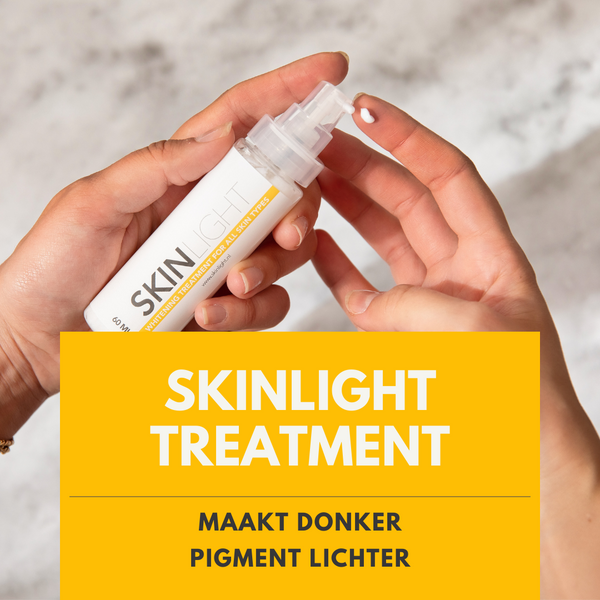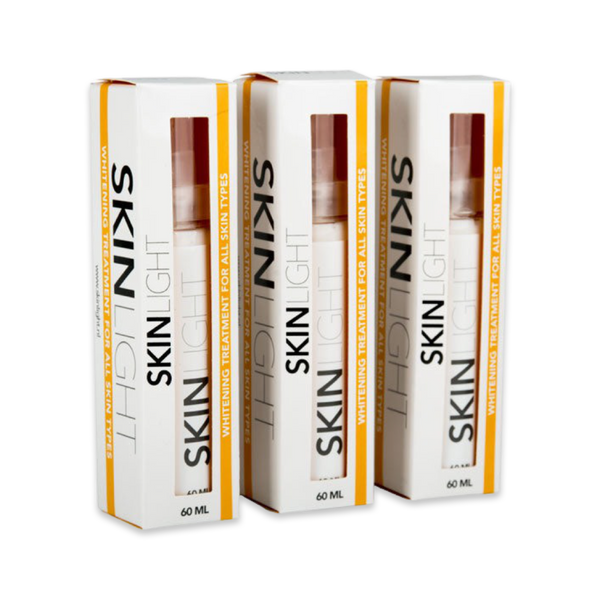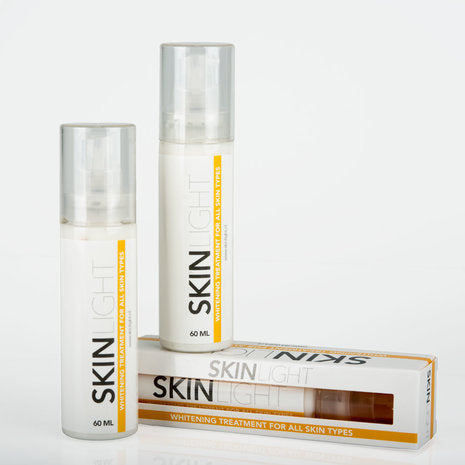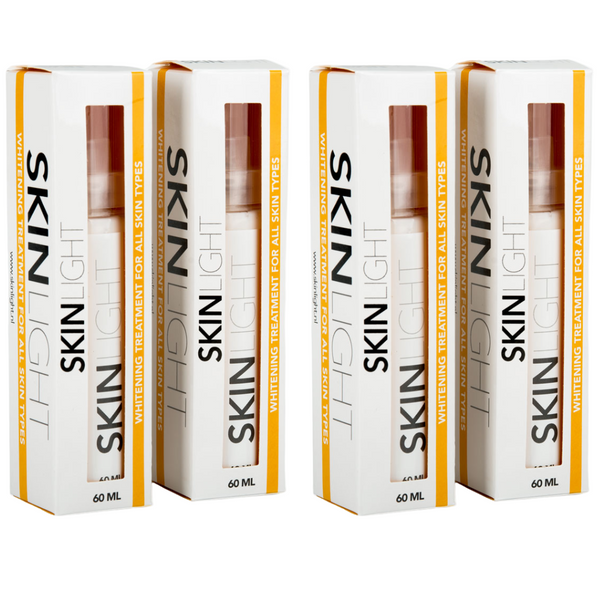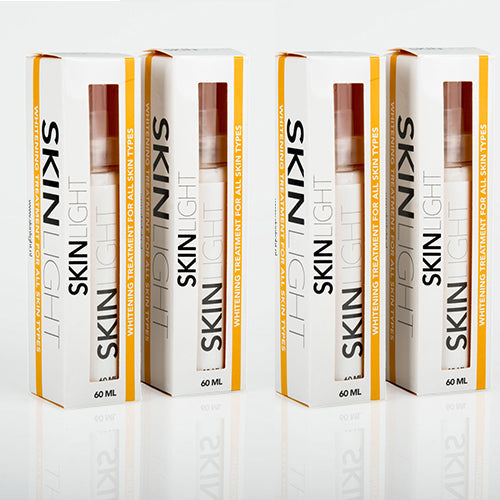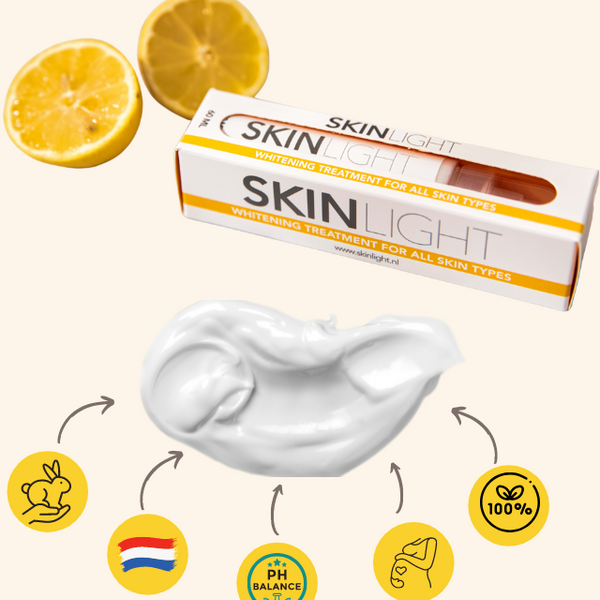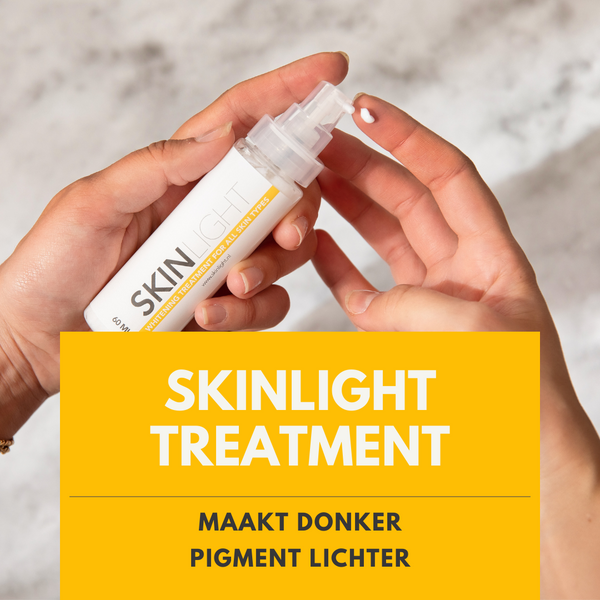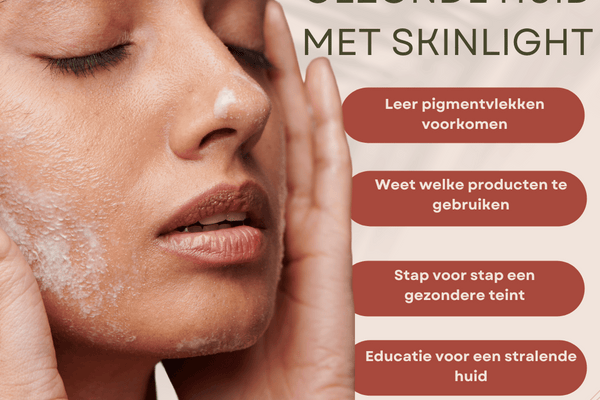Pigment spots are a common problem. These dark spots on the skin are caused by excessive production of melanin, the pigment responsible for the color of our skin. Pigment spots can be caused by various factors, such as sun exposure, hormonal changes and aging. Fortunately, there are several treatments available to make pigmentation removal possible. In this article we discuss the causes of pigment spots, how you can prevent them and which treatments are available to remove pigment spots.
Causes of pigment spots
A pigment spot is often caused by an excessive production of melanin in the skin. To make it possible to remove a pigment spot, you must first find out the cause. This can be for various reasons, such as:
Sun exposure: Sun exposure is one of the main causes of pigmentation. UV radiation stimulates the production of melanin in the skin, which can lead to excessive pigmentation.
Hormonal changes: Hormonal changes can also lead to pigmentation. This can happen, for example, during pregnancy, when the hormone estrogen can stimulate the production of melanin.
Aging: As we age, the production of melanin in the skin decreases. This can lead to dark spots on the skin, especially on the hands and face.
Treatment of pigment spots
If you are looking for a less invasive treatment to remove a pigmentation, skin-friendly bleaching creams and lotions are a good option. These products often contain ingredients that inhibit the production of melanin and thus help to fade pigment spots. Got excited? Below are a few ways these pigment spot creams can work:
1. Hydroquinone: One of the most commonly used ingredients in pigment spot creams is hydroquinone. This ingredient inhibits the production of melanin in the skin and thus helps to reduce pigment spots.
2. Vitamin C: Vitamin C is known for its antioxidant effect and can also help remove pigmentation spots. It helps to brighten and smooth the skin.
3. Kojic acid: Kojic acid is a natural ingredient extracted from mushrooms. It inhibits the production of melanin and thus helps to reduce pigment spots.
4. Arbutin: Arbutin is a natural ingredient extracted from the bearberry plant. It inhibits the production of melanin and thus helps to fade pigment spots.
5. Using a pigmentation cream and lotions can be effective in reducing pigmentation, but it is important to be patient and apply the cream regularly. It often takes several weeks to months before results are visible. In addition, it is important to always use a sunscreen to protect the skin against further pigmentation.
There are several treatments available to remove pigmentation spots. Below we discuss the most commonly used treatments:
5. Laser treatment: In a laser treatment, a laser is used to remove the pigment spots. The laser emits a concentrated beam of light that heats up and destroys the pigment in the skin. After the treatment, the skin will be red and swollen, but this usually disappears within a few days.
7. Chemical Peel: In a chemical peel, a chemical solution is applied to the skin, which peels off the top layer of the skin. This also removes the pigment spots. After the treatment, the skin may be red and swollen, but this usually disappears within a few days to a week.
8. Microdermabrasion: With microdermabrasion, the top layer of the skin is ground away with small crystals. This also removes the pigment spots. After the treatment, the skin may be red and swollen, but this usually disappears within a few days.
Types Pigment spots
Pigment spots are a common skin problem and can be caused by various factors. There are different types of pigment spots, each of which has its own cause. Below we list the most common types of pigment spots:
Melasma) Melasma is a common form of pigmented spots that mainly occurs in women. It is often caused by hormonal fluctuations, such as during pregnancy or by taking birth control pills. Melasma is also called the 'pregnancy mask' because it often develops during pregnancy. The pigment spots are often symmetrical and mainly occur on the face.
Treatment plan:
Melasma is treatable. Avoiding sun exposure and using sunscreen with a high SPF is important to prevent further pigmentation. A specialist can also prescribe a whitening cream containing, for example, hydroquinone, vitamin C or arbutin. In addition, laser therapy can be an effective treatment.
Post-inflammatory hyperpigmentation) Post-inflammatory hyperpigmentation often occurs after inflammation or damage to the skin, such as after acne or eczema. The pigment spots can be dark brown or black in color and are usually temporary.
Sunspots) Sunspots are also called age spots and are caused by exposure to the sun. They occur mainly on the hands, face and arms and are often light brown in color.
Treatment plan: Avoiding sun exposure and using sunscreen with a high SPF is important to prevent further pigmentation. A specialist can also prescribe a whitening cream containing, for example, hydroquinone, vitamin C or arbutin. In addition, laser therapy can be an effective treatment.
Lentigo) Lentigo are small brown spots that mainly occur on skin that has been exposed to the sun a lot. They mainly occur in people over the age of fifty and are usually harmless.
Treatment plan: Lentigo are usually harmless and do not require treatment. If you still want to remove them, laser therapy can be an effective treatment.
Prevent pigment spot
Prevention is always better than cure. Below you will find some tips to prevent pigment spots:
Protect your skin from the sun: Sun exposure is one of the main causes of pigmentation. Therefore, always use a sunscreen with a high SPF and wear protective clothing if you are in the sun for a long time.
Avoid the sun in the heat of the day: The sun is strongest between 11 a.m. and 3 p.m. Avoid the sun at these times as much as possible.
Use products with vitamin C: Vitamin C can help prevent and reduce pigment spots. Therefore, use products with vitamin C, such as serums and creams.
Do not use aggressive scrubs: Aggressive scrubs can damage the skin and lead to excessive pigmentation. Therefore, use mild scrubs and exfoliants.
Frequently asked questions about removing pigment spots
Are pigment spots dangerous?
In most cases, pigment spots are not dangerous. It is important to keep a close eye on changes in the skin. If a pigment spot changes shape, color or size, it could be a sign of skin cancer.
Can pigment spots go away on their own?
Pigment spots can sometimes go away on their own, especially if they are caused by hormonal changes, such as pregnancy. However, it may take some time for them to completely disappear.
Can pigment spots come back after treatment?
Yes, pigment spots can come back after treatment. It is therefore important to properly protect the skin against the sun and to use the right skin care products.
Can I prevent pigment spots by eating healthy?
There is no evidence that a healthy diet can prevent pigment spots. It is important to have a healthy and varied diet for healthy skin.
Can I treat pigment spots myself?
It is not recommended to treat pigment spots yourself. This can lead to more pigmentation or even scarring. Always consult a specialist for the right treatment.
When to call the doctor?
Although pigment spots are usually harmless, they can sometimes also be a sign of skin cancer. That is why it is important to be alert to changes in the size, shape or color of the pigment spots.
Call your doctor immediately if you have a pigment spot that:
- Growing fast
- Changes shape or color
- Red or inflamed
- Itches, bleeds, or is painful
- If you have any of these symptoms, don't hesitate to contact your doctor. They can determine if you have skin cancer and refer you to a dermatologist if necessary.
Early detection of skin cancer significantly increases the chance of a cure. So be alert to changes in your skin and always consult a specialist if you are unsure about a pigmentation spot.
Recognize and resolve
Pigment spots can be annoying, but luckily there are several treatments available to remove pigment spots. However, it is important to properly protect the skin from the sun and to use the right skin care products to prevent pigment spots. If you suffer from pigment spots, always consult a specialist for the right treatment.
With this article we hope to have given you more insight into the causes of pigment spots and how you can treat and prevent them. Don't forget to follow these handy tips and protect your skin well against the sun to prevent pigment spots.

